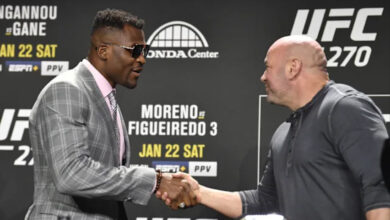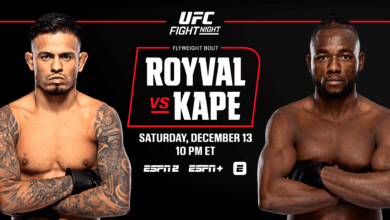Digital Assets in Wrestling and MMA — Is it Time for Fan Tokens to Enter the Ring?
The tokens now being associated with combat entertainment are what older generations might have imagined things like baseball cards and fan clubs would be like in the future. Except that they’re probably a little weirder and wackier, both in terms of the innovations they’ve made and the infrastructure they exist within. Compared with those older counterparts, some of the technological aspects like personal computers and the internet are already very familiar to us. But as for the rest? Let me explain.
In case it’s not clear by this point, a digital asset can be many types of data stored digitally such as an image or sound file, but nowadays refers to a cryptographically hashed piece of data stored on a blockchain or similar technology. Well-known types include cryptocurrencies (each token of which are in principle interchangeable or fungible, like dollar bills or postage stamps) and NFTs or non-fungible tokens (which are not).
But what does all that have to do with wrestling and MMA, you ask?
The fact is that industry behemoths WWE, UFC and PFL have leaned into the phenomenon. NFTs are the aforementioned evolution of the trading card — often a video clip — while fan tokens are a more fungible resource. And while you might be aware that the market value of digital assets is broadly deflating at the moment, that doesn’t mean that they’re going to be disappearing any time soon.
NFTs Get Into the Cage
The McMahon empire was the first out of the gate on the NFT phenomenon, selling a series of collectible moments in the career of the legendary Undertaker, followed by a John Cena series during the NFT explosion of 2021. And although the jump in NFT prices last year were clearly an overvaluation, with many left unsold after a while, WWE continued to go all-in by registering NFT-related trademarks well into this year. Around the same time the UFC got in on the action with a series called UFC Strike, which paid off as soon as the first round sold out and netted the organization $5 million.
While those early WWE ‘drops’ were event-type phenomena sold ahead of big shows and including one-of-a-kind memorabilia and exclusive tickets, there are now thousands of NFT tokens actively being traded using a branded marketplace platform that uses one of those trademarks, Moonsault. No doubt WWE is aiming to capitalize on their established fan base and marketing to override some of the lost enthusiasm for things like pixelated cartoons.
Fan Tokens Appear on the Scene
Although they haven’t grabbed the headlines of cryptocurrencies or NFTs, fan tokens are an asset that are gaining interest in the world of sports, and beyond fighting also have established partnerships with teams from other sports leagues like the NHL, NFL and NBA. Some crossover exists, with the term fan token being used to describe the NFTs launched through the Dapper Labs platform, for example, but instead of owning the rights to a piece of historic memorabilia, holding these tokens on the Socios platform is more like owning a new type of fan club membership. Purchasing fan tokens grants access to voting on team decisions (usually aesthetic ones), games and competitions, unique merch and fan experiences like meeting the stars. The tokens can be re-exchanged at any time, and rise and fall in value with the popularity of the sports team or organization. The UFC announced their partnerships all the way back in 2020, while the PFL fan token launch was delayed quite a bit and suffered some teething problems.
In a variety of ways, fighting fans are more like investors than ever with the rise of these digital assets, since their value is connected to the popularity of the institutions, and in that sense are changing the face of the relationship between the two.




